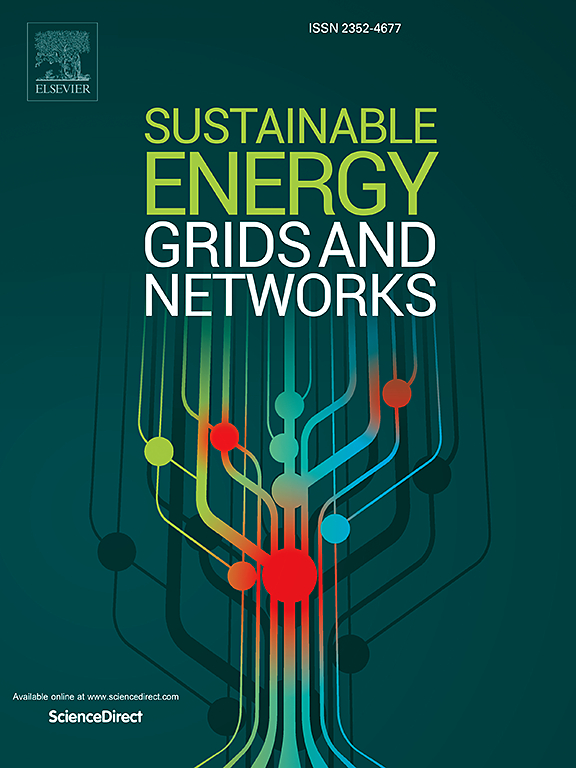A novel approach to optimize and allocate battery energy storage system in distributed grid considering impact of demand response program
IF 4.8
2区 工程技术
Q2 ENERGY & FUELS
引用次数: 0
Abstract
Maintaining grid voltage within operational limits poses a significant challenge in distribution power systems, particularly with the increasing integration of Renewable Energy Sources (RES). This paper introduces an innovative management strategy for Battery Energy Storage System (BESS) to ensure reliable voltage regulation in distributed power systems with substantial Photovoltaic (PV) integration. The proposed method integrates grid sensitivity factor with Second-Order Cone Programming (SCOP) modeling for power flow. BESS’s optimal size and location are determined by minimizing the total cost of operation, voltage deviations, power losses, and peak demands in the distribution network. Additionally, the study explores the impact of Demand Response (DR) on BESS size and placement. The method’s effectiveness is demonstrated using a modified IEEE 33-bus system with actual load and PV generation data. By incorporating BESS’s optimal charging and discharging into traditional power flow analysis, grid parameters such as voltage and power flow accuracy are validated. Simulation results show the optimization model’s effectiveness, emphasizing the benefits of properly coordinating BESS in distribution systems with integrated PV. The numerical results indicate that the integration of BESS allocation with DR demonstrates that the proposed approach achieves a substantial reduction in energy losses (19 %), highlighting the effectiveness of the method in ensuring grid reliability under high PV penetration scenarios.
考虑需求响应方案影响的分布式电网电池储能系统优化分配新方法
将电网电压保持在运行范围内对配电系统提出了重大挑战,特别是随着可再生能源(RES)的日益整合。本文介绍了一种创新的电池储能系统(BESS)管理策略,以确保具有大量光伏(PV)集成的分布式电力系统的可靠电压调节。该方法将电网灵敏度因子与二阶锥规划(SCOP)模型相结合。BESS的最佳尺寸和位置是通过最小化配电网络的总运行成本、电压偏差、功率损耗和峰值需求来确定的。此外,研究还探讨了需求响应(DR)对BESS规模和布局的影响。采用改进的IEEE 33总线系统,结合实际负载和光伏发电数据,验证了该方法的有效性。通过将电池储能系统的最优充放电纳入传统潮流分析,验证了电压、潮流等电网参数的准确性。仿真结果表明了优化模型的有效性,并强调了合理协调BESS与集成光伏配电网的好处。数值结果表明,BESS分配与DR的集成表明,该方法实现了能量损失的大幅降低(19% %),突出了该方法在高光伏渗透率场景下确保电网可靠性的有效性。
本文章由计算机程序翻译,如有差异,请以英文原文为准。
求助全文
约1分钟内获得全文
求助全文
来源期刊

Sustainable Energy Grids & Networks
Energy-Energy Engineering and Power Technology
CiteScore
7.90
自引率
13.00%
发文量
206
审稿时长
49 days
期刊介绍:
Sustainable Energy, Grids and Networks (SEGAN)is an international peer-reviewed publication for theoretical and applied research dealing with energy, information grids and power networks, including smart grids from super to micro grid scales. SEGAN welcomes papers describing fundamental advances in mathematical, statistical or computational methods with application to power and energy systems, as well as papers on applications, computation and modeling in the areas of electrical and energy systems with coupled information and communication technologies.
 求助内容:
求助内容: 应助结果提醒方式:
应助结果提醒方式:


